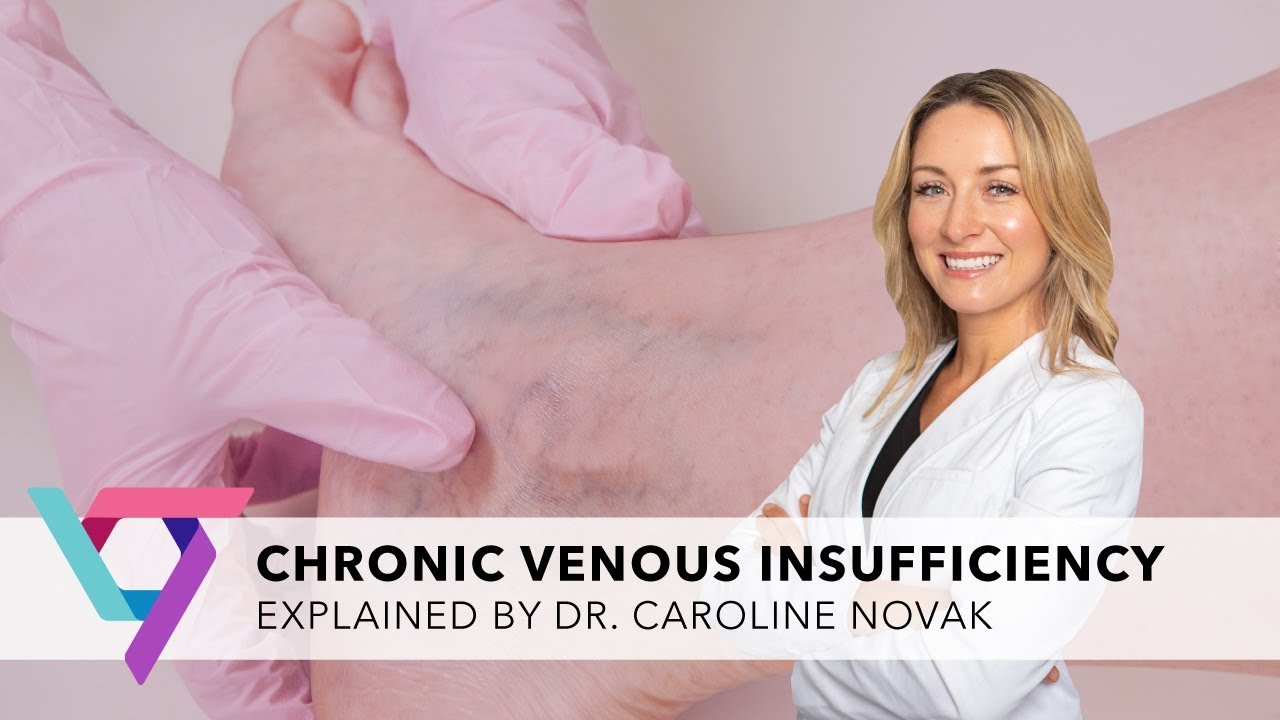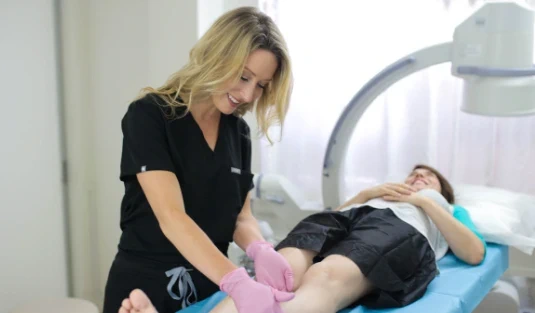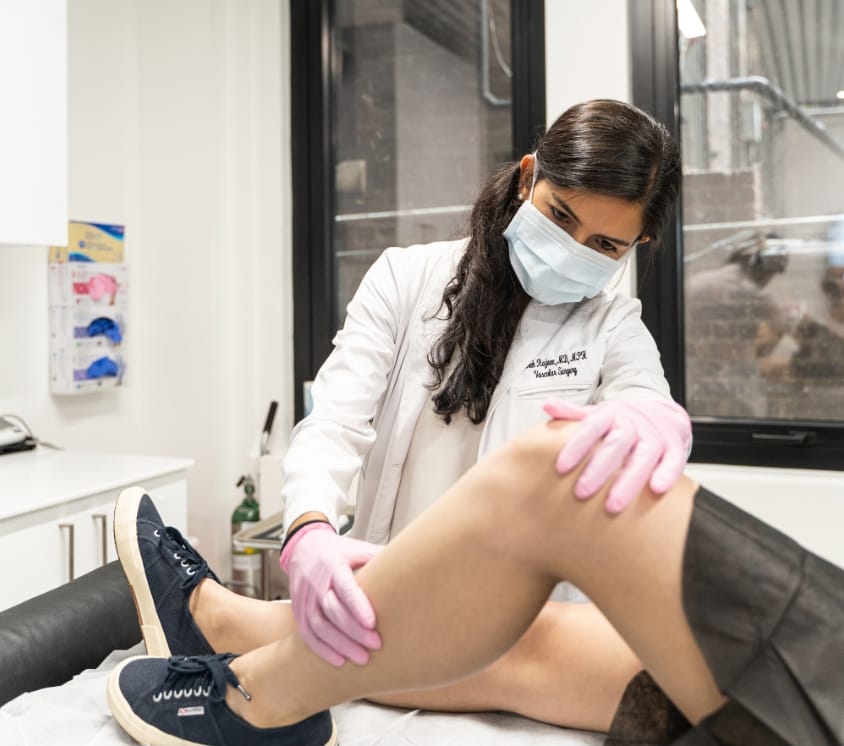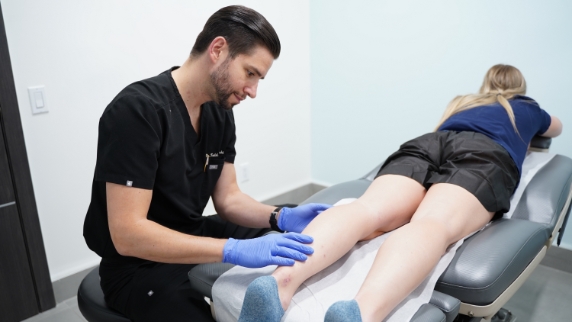It is possible to have symptoms of venous insufficiency without knowing. For instance, you might be having regular night leg cramps these days. It could also be possible that your ankles are swelling every day after work. In both cases, you may think that your legs are cramping or swelling because you are straining a lot. You might also think that cramps are being caused by dehydration. Surprisingly, the symptoms you are having could be associated with venous insufficiency and you need to go to a vein treatment center for assessment.
But what is this venous insufficiency all about? It is a vascular condition that develops when there is poor blood circulation in legs. It causes some of the blood that is supposed to reach the heart and lungs to pool in veins. Gradually, this leads to serious vein problems that we will discuss later on. Early examination and treatment are much recommended as the key causes of venous insufficiency can be detected and treated, preventing severe vein damage.
What are the causes of venous insufficiency?
Main cause – Impaired valves
The main reason why men and women suffer from venous disease (venous insufficiency or venous reflux disease) is because of impaired valves. These valves can be impaired via an injury, vein weakening due to aging or congenital valve deformities. Whatever the cause might be, damaged valves do not function properly. Instead of opening and closing fully to stop blood from leaking, they just close partially.
This allows some of the blood travelling to the heart and lungs to flow backward and pool in veins. As the refluxing process continues, veins are filled with blood and their walls begin to swell due to mounting pressure. So the veins become more visible on the skin surface; in other words, they become varicose veins. By getting in touch with a vein doctor San Diego, you can find out whether some of your vein valves have failed and that’s why you are experiencing strange symptoms.
Other causes of venous insufficiency
- Genetics – This is one of the factors that nobody can avoid. If your genes make you prone to vascular problems, there is not much you can do to stop them. It is easy to know whether you are susceptible to vein issues by just observing your relatives and family members. Do they suffer from varicose veins and spider veins? If most people do, chances are that you will as well go to a vein treatment center to seek medical help one day.
- Pregnancy –There are women who develop symptoms of venous insufficiency for the first time when they get pregnant. Vulva varicose veins are familiar during pregnancy, although some females develop some leg varicose veins. After delivering a child, these varicose veins can disappear without treatment. In repeat pregnancies, however, varicose veins might continue to disturb and the only way out is to seek treatment from the top vein doctor San Diego.
- Being female – Just being born a woman makes you susceptible to venous disease. Due to hormonal fluctuations in your body during your child-bearing age, you can develop varicose veins and related complications. Using birth control pills is thought to aggravate the problem as well as the use of hormone replacement therapy. If you are a female with strange pain and discomfort in legs, locate a suitable vein treatment center near you and report it. You never know if your hormonal imbalance is triggering varicosities.
- Being overweight – Are you an overweight person who is struggling with leg pain, cramping and related problems? If so, it is likely that your extra weight is straining your legs a lot. So it would be great to take simple precautions to drop some weight and become healthier. By doing so, you might notice that your vein symptoms are diminishing.
- Being sedentary – Do you spend hours sitting down or standing up? Being in just one spot for too long increases your chances of suffering from poor blood circulation. If you must sit down when working, get up from your seat at least two times every hour to enable flawless blood flow and to reduce strain. On the other hand, those who must work while standing at the same place for hours should reduce strain by sitting down regularly. Placing each leg at a time on top of a footstool can also reduce the strain felt. If you take these simple actions, you might not have a reason to go to a vein treatment center
- Aging – There is no single person who can resist aging. It happens to everybody and brings with it a lot of uncomfortable symptoms. One of these is signs of venous reflux disease, including varicose veins. When women reach menopause, they become prone to vein problems. Men face the same issues much later and are generally less affected compared to women. Aging causes veins to stretch out and weaken. An overstretched vein is already too damaged to be reversed, including the valves within it. As an older person, you should seek the assistance of a vein doctor San Diego if your legs are swollen and painful.
Early signs of venous insufficiency
- Spider veins – Alternatively called thread veins or telangiectasia, spider veins are tiny veins that often attack an extensive leg area. They are often seen on the thigh, calf or foot and can have a blue or red color. Spider veins tend to look like a spider web, explaining their name. If you notice these, go to a vein treatment center for a medical checkup. While their real cause is unknown, sometimes they are linked to venous insufficiency.
- Varicose veins – Some people develop trunk varicose veins. These are larger sized veins with a blue or purple color and a swollen, twisted appearance. They are not pleasant to look at and can be painful and uncomfortable. Once you develop these, the odds are higher that you have a venous reflux disease. As a result, we would tell you to call a reputable vein treatment center and talk to a vascular expert. Once you get your first appointment, the vein doctor San Diego will examine your leg veins and determine if they are varicose veins.
- Swollen ankles – People with venous insufficiency tend to have swollen ankles by the end of the day. This should be seen as an alarming sign that something may be wrong with your blood circulation. While there are other health issues that could cause your ankles to swell, there is a big chance that you are suffering from poor blood circulation in veins. So it is advisable to talk to renowned doctor like Carly Guthrie about your constant leg swelling. Once this vein doctor San Diego carries out a venous duplex ultrasound on you, they will discover what is wrong with your veins.
- Restless leg syndrome – This is a common early symptom of venous reflux disease. It makes your legs uncomfortable and restless.
- Cramps – People who have already developed spider veins are aware of night leg cramps. Before you mistake these for something else, get in touch with a good vein treatment center near you. The vascular experts there will be able to examine you and rule out vascular problems.
- Throbbing pain – This pain can happen anytime and can be so disturbing. If you are having unexplained leg pain, get the opinion of a doctor.
- Heaviness in legs – Feeling as if your legs are heavier than usual is common when there are poor blood circulation issues. People can experience this symptom uniquely. Some may feel that heaviness sensation as soon as they rise up in the morning and others after a long day at work.
- Itching – This is a rather common early symptom of a venous insufficiency condition. It gets worse in summer due to heat and it is the affected veins that feel extremely itchy. This symptom should not be dismissed, especially, if one has varicose veins. Seeing a vein doctor San Diego is extremely necessary.
Late signs of a venous reflux disease
If early symptoms are ignored and left untreated, the underlying disease will continue to thrive. With time, it will trigger other serious symptoms that will be time-consuming and painful to treat. These include the following:
- Skin discoloration – It is not uncommon to find that your leg skin in areas with varicose veins is changing color and becoming more stained.
- Bleeding – Veins that have become weak and damaged can be bruised easily, causing bleeding.
- Varicose eczema – This is a form of eczema that is characterized by rough, scaly and flaky skin.
- Lipodermatosclerosis – This is a problem that entails skin tightening, reddening and hardening due to fat loss. It affects the area beneath your calf and above your ankles and it tends to get thinner with time.
- Venous ulcers – These are rather common and tend to develop when venous insufficiency has become chronic in its final stage. These ulcers can be so serious that they begin to ooze pus, and can easily get infected because they are open wounds. It is not advisable to wait until you have these ulcers. But, if you already have them, it is better to see a vein doctor San Diego who is renowned and reputable.
- Phlebitis – This refers to vein inflammation which causes pain.
- Deep vein thrombosis – Known as DVT in short form, deep vein thrombosis is the formation of blood clots in deep veins. It is important to learn more about DVT from your vein treatment center so that you can report it the soonest possible. It is more dangerous to have DVT than to have superficial veins blood clots as the latter can go away without treatment.
- Edema – Severe edema can be noted along with other symptoms like venous ulcers. This type of swelling should be addressed by the right vein doctor San Diego as it can make your life extremely difficult.
When to go to a vein treatment center for and diagnosis
The best time to see your GP is when you notice odd symptoms such as pain, itching, swelling, cramping, spider veins and heaviness in legs and so on. All these are early signs of venous insufficiency and should be addressed early. Your GP could refer you to a perfect vein treatment center once they realize that you have a vascular problem.
During diagnosis, the vein doctor San Diego will just observe your legs when you are standing up or sitting down with your legs dangling. That’s the best time to spot large and swollen varicose veins. To confirm their findings, they might carry out a venous duplex ultrasound test. If something unusual is found in your blood vessels, the most appropriate form of treatment will be provided.
Treating venous disease symptoms
Your vein doctor San Diego can use a variety of ways to treat your varicose veins and the underlying disease. The medical options that are usually picked first these days include the minimally invasive ones:
- Sclerotherapy – Vein injections with a chemical agent that causes permanent damage and closure of the vein.
- Radio frequency ablation – Varicose veins, especially the larger, swollen ones, are damaged via radio waves energy.
- Endovenous laser ablation – This is the use of light energy to destroy varicose veins for good. It works when varicose veins are small to medium-sized.
If these techniques do not work, your vein doctor San Diego might recommend surgical techniques. Vein stripping and ligation surgery may be done when a vein cannot be cured by sealing. It leads to the removal of stubborn varicose veins and has severe side effects than the methods shown above.
Conclusion
Besides the techniques that are offered at the vein treatment center, you can use self-help strategies to improve your varicose veins. Briefly, these include:
- Wearing compression stockings
- Raising your legs to reduce swelling
- Losing weight
- Taking several breaks when working
- Taking a walk often
- Staying in touch with your vein doctor San Diego.
If you notice than new spider veins or varicose veins are forming, consult your vein treatment center immediately. These will have to be treated just like the first ones.














